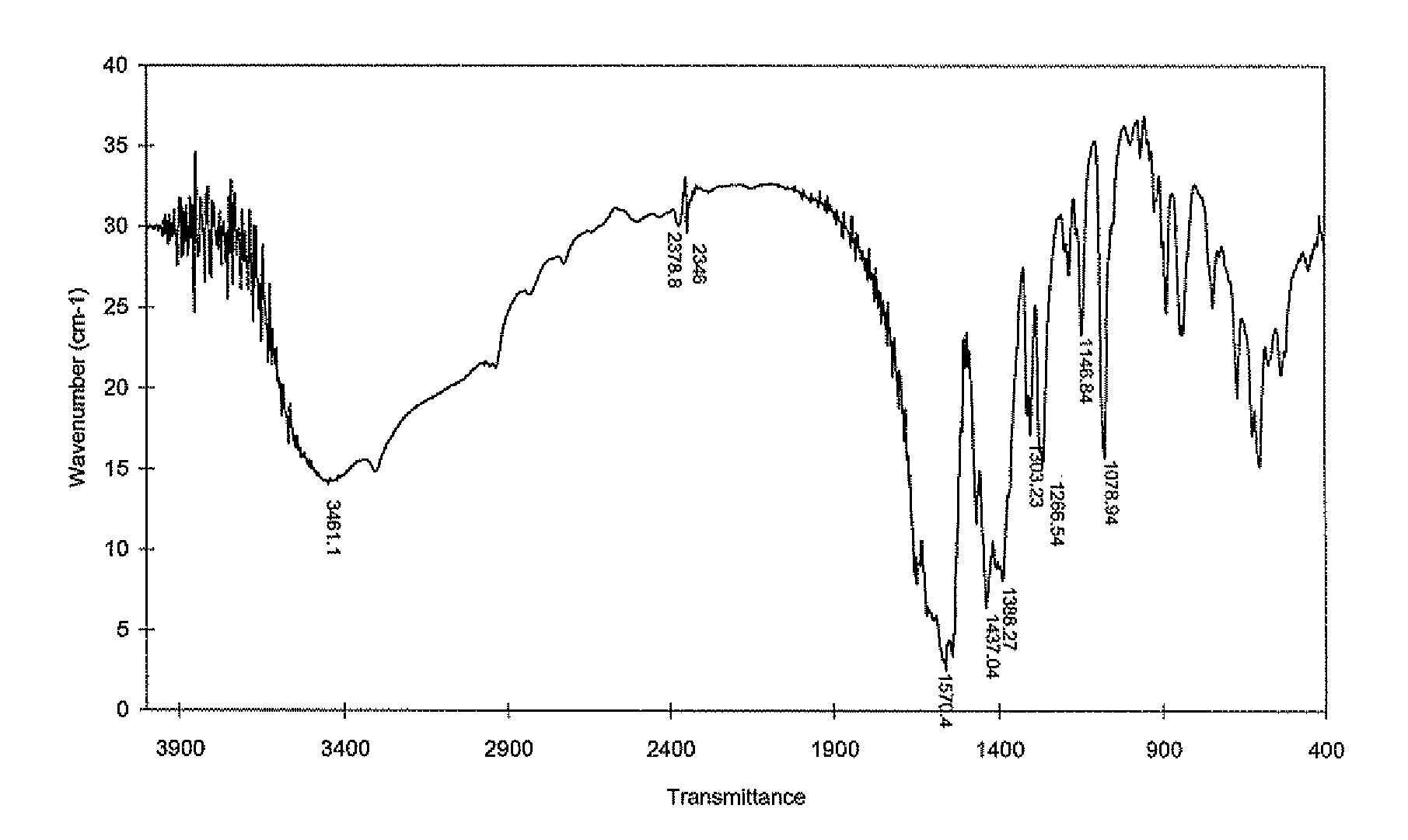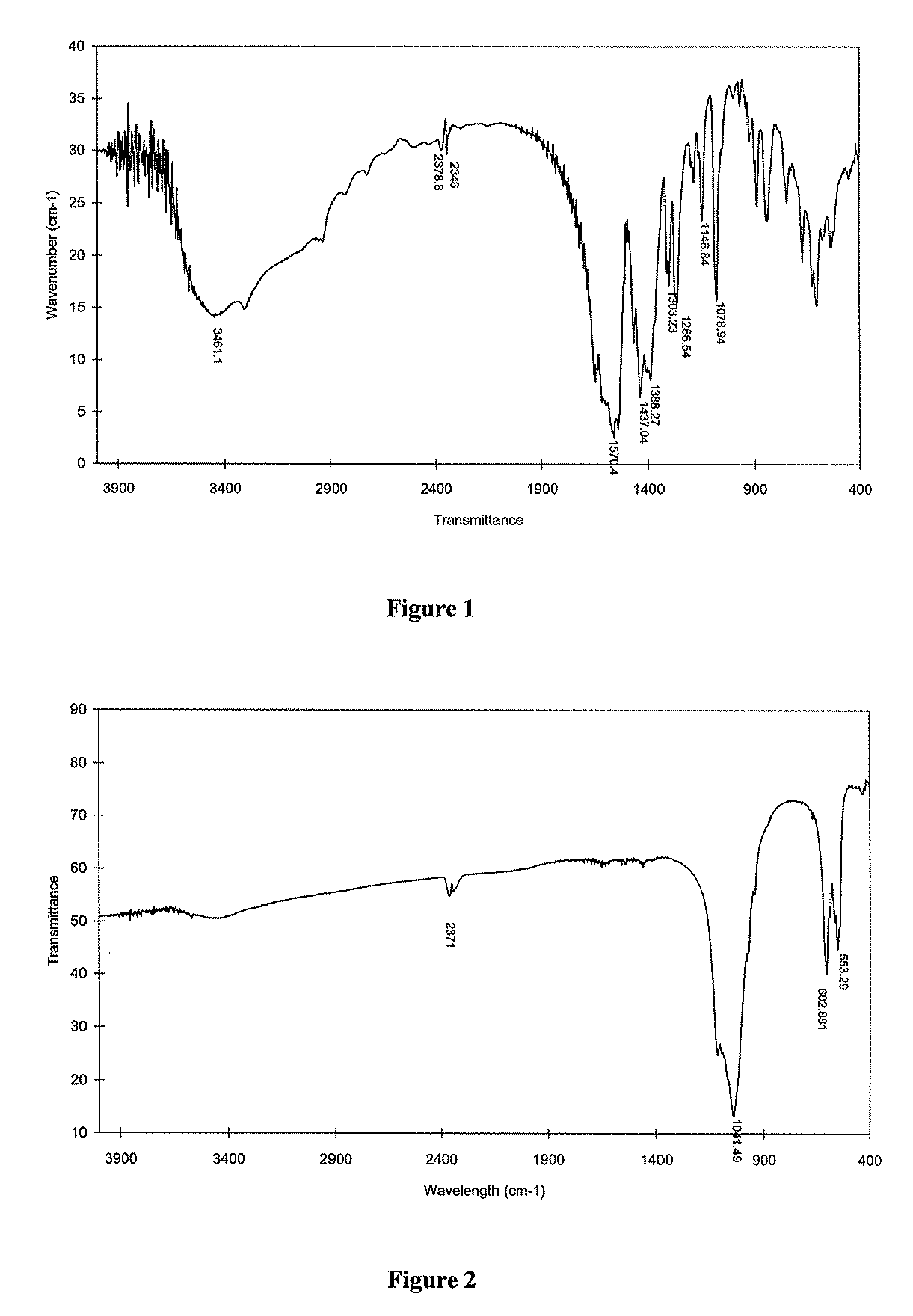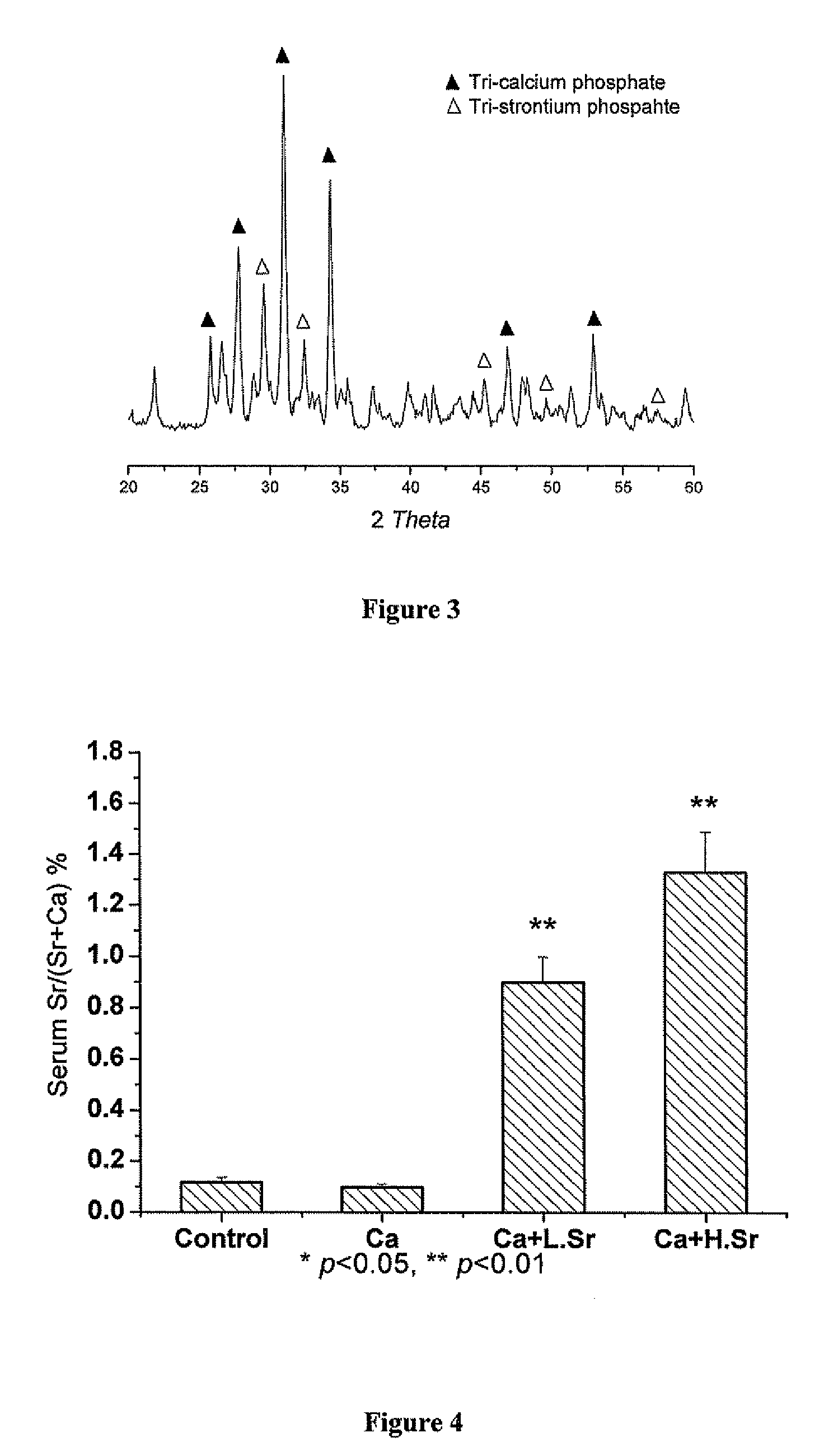Strontium fortified calcium nano-and microparticle compositions and methods of making and using thereof
a technology of nano- and microparticles, which is applied in the field of strontium fortified calcium nano-and/or microparticle compositions, can solve the problems of reducing bone tensile strength and compressive strength, reducing bone remodeling imbalance, and osteoporosis can dramatically increase fracture risk, so as to improve the biocompatibility of implants, prevent loosening of implants, and reduce the leaching of metal ions
- Summary
- Abstract
- Description
- Claims
- Application Information
AI Technical Summary
Benefits of technology
Problems solved by technology
Method used
Image
Examples
example 1
Synthesis of Strontium Citrate and Preparation of Strontium Citrate / Calcium Citrate Blends
Synthesis of Strontium Citrate
[0105]0.5 moles of citric acid monohydrate was dissolved in 500 ml of distilled water. 0.5 moles of strontium hydroxide was added to the citric acid solution in a few batches with stirring and heating. The reactor was covered with glass to prevent spillage of the viscous liquid. The solution was degassed using ultrasound to help reduce the carbonate content of the final product. For general food grade or supplement usage, 1-2% carbonate is acceptable. For a higher purity product, the reactor was filled with an inert gas, such as argon or nitrogen.
[0106]After heating the solution for 1 hour, the solution was cooled to room temperature. Addition of an organic solvent such as acetone, ethanol or propanol to stabilize the complex further improved the yield of the reaction. The precipitate was dried at 100° C. The strontium citrate salt was mixed with calcium citrate by...
example 2
Synthesis of Strontium Substituted Tri-calcium Phosphate
[0108]3.67 moles of Ca(OH)2 and 0.41 moles of Sr(OH)2.8H2O were dissolved in 8 L distilled water and stirred for one hour. 2.72 moles (182.4 ml) of H3PO4 was added dropwise at a rate of 2 ml / hour via a syringe pump. After the addition of H3PO4, the solution was stirred for one to two days. The tri-calcium / strontium phosphate precipitate was filtered using vacuum suction and dried in an oven at 110° C. for 12 hours. The precipitate was milled and baked in the oven again for 6 hours. The precipitate was then heat treated in a furnace at 800° C. for three hours. The temperature of the furnace was raised 50° C. / 15 minutes until it reached 800° C. After heating at 800° C. for three hours, the furnace was cooled, and a greenish white powder was obtained. The yield was approximately 84.8%. The particle size of the strontium substituted tricalcium phosphate was 100 nm-7.41 μm. Without heat treatment, the particle size was 100 nn-24.14 ...
example 3
Synthesis of Nano-Calcium / Strontium Citrate
[0116]A micro-emulsion was prepared by placing 0.1M sodium citrate (solution A, 280 mL) and a mixture of 0.1M calcium chloride and 0.05M strontium chloride (solution B, 450 mL) in a dispersing apparatus. The mixture was homogenized at 5000 rpm for 45 minutes. The solid phase was separated out by centrifugation. The precipitate was washed with ethanol / dichloroethane and further washed with ethanol three times. The nano-particles were dried at 100° C. The resulting particles had a length of about 500 nm and a thickness from about 35-150 nm.
PUM
| Property | Measurement | Unit |
|---|---|---|
| Temperature | aaaaa | aaaaa |
| Diameter | aaaaa | aaaaa |
| Diameter | aaaaa | aaaaa |
Abstract
Description
Claims
Application Information
 Login to View More
Login to View More - R&D
- Intellectual Property
- Life Sciences
- Materials
- Tech Scout
- Unparalleled Data Quality
- Higher Quality Content
- 60% Fewer Hallucinations
Browse by: Latest US Patents, China's latest patents, Technical Efficacy Thesaurus, Application Domain, Technology Topic, Popular Technical Reports.
© 2025 PatSnap. All rights reserved.Legal|Privacy policy|Modern Slavery Act Transparency Statement|Sitemap|About US| Contact US: help@patsnap.com



